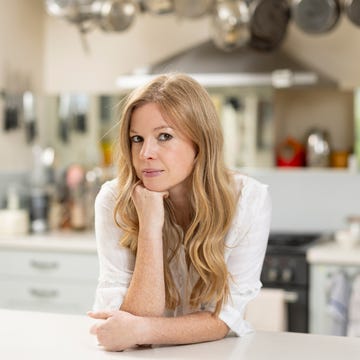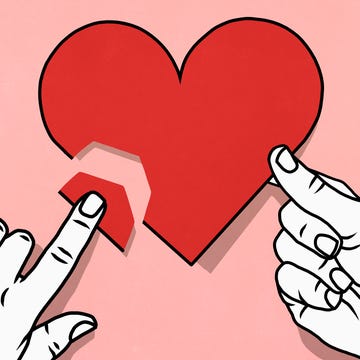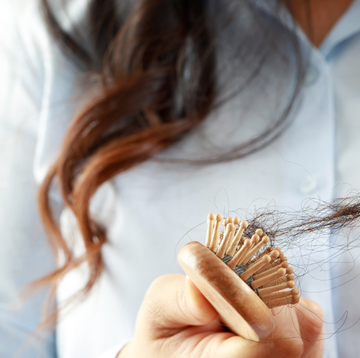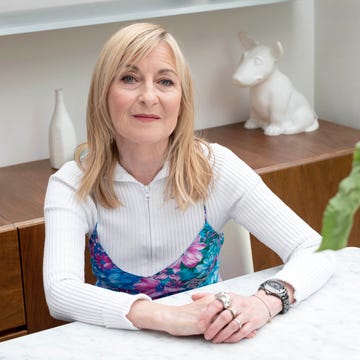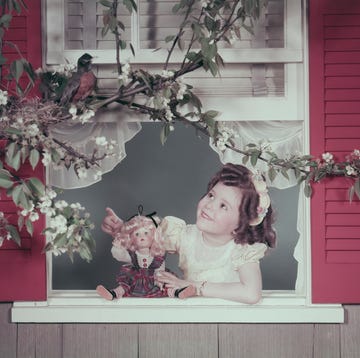It started, like most addictions do, harmlessly enough. When my partner, Stu, and I moved into our new home five years ago, Mum arrived with a vase of imitation cornflowers as a housewarming gift.
I placed the plastic posy on a shelf in the living room, next to a particularly fine piece of Whitefriars glass. Stu shot me a look. ‘Oh, it looks lovely,’ Mum said, beaming. ‘I knew you’d like it.’
I could have stopped it then. Because my rational brain knew the flowers would have to go. Or, at the very least, get tucked discreetly behind a picture frame if I was taking an Instagram snap of my dog being cute. But my touchy-feely right hemisphere was conflicted.
What to read next
Because the baked-in frugality of buying once and buying to last seemed so Mum. The same Mum who’d catch a bus from Sainsbury’s to Asda if its butter was 20p cheaper. This gaudy gift, seen through her eyes, made perfect sense: if you’re going to say it with flowers, don’t say it with a bunch of chrysanths that’ll be wilting in smelly brown water in a week’s time.
‘Oh, they’re gorgeous,’ I said, dialling up the enthusiasm a notch too far. And so, inside Mum’s head, the idea took hold that I really, really wanted to make my home look like I’d won a trolley dash at The Range.
For a long while, even as Mum’s purchases took seed like a not-so-wild flower meadow inside my carefully curated home, my rational brain maintained control of the situation.
The faux flowers were shoved into the shadowy corners of my house, peeping out meekly behind a framed Hockney print or Neom three-wick candle, only to reappear – as if by magic – when Mum and Dad called.
But every time I caught sight of them, I felt conflicted. Aesthetically, they’re all wrong. But emotionally… the garish wildflowers remind me of the time Mum ingeniously swerved the ‘no-flowers’ rule when I was recovering from a stroke in hospital and proudly popped a little pot of plastic poppies on my tray table. ‘They can’t take them away,’ she smiled, triumphantly. ‘And you can take them home with you,’ she said, making it less of a suggestion and more an instruction. So I did.
Then there are the plastic tulips from Amsterdam, reminding me of Mum and Dad’s last foreign holiday together. Mum had seen Monty Don strolling through the tulip fields on Gardeners’ World and called me up, asking me to look into a coach trip that spring.
And there’s the little basket of silk narcissus given to me on my grandmother’s birthday. Every time I look at it, I recall how excited the seven-year-old me was when my grandmother let me plant bulbs in her garden. The magic of seeing them bloom is captured in a fading Polaroid: me sitting, beaming, surrounded by a host of golden daffodils.
I know these ones are plastic, and I know that plastic waste is the root of all evil, trashing our oceans and rivers. But my imitation harvest isn’t destined for landfill anytime soon. Instead, as I write this in my office, I’m surrounded by plastic petals. Look, there’s a crate overflowing with forever-flourishing dahlias. And… what’s that? A plastic peony paperweight with ‘Greetings from Ilfracombe!’ etched on it. Still sprightly after five summers. A magical holiday captured in aspic.
Japanese knotweed-like, their march through the house has been merciless. At first, the downstairs loo seemed a safe place to tentatively try out my new collection. Now, there’s not a room that hasn’t been faux-flower-bombed.
Because whatever else might threaten to temporarily derail me – bills, deadlines, a snappy exchange with a grumpy dog walker – my faux blooms are a touchstone to something deeper: something that brings me back to my senses, reminds me of home in its deepest sense and makes me smile. They might never have had roots, but they somehow reinforce mine.
During the dark days of Covid, I had twice-weekly Zoom calls with my parents. After a few false starts and close-ups of Dad’s nostrils or the ceiling light, the sight of their living room and its little cast of long-treasured trinkets took on an almost numinous quality – the cherubic Lladró boy, the clumsily hand-turned fruit bowl I made in woodwork, the snowglobe of the CN Tower in Toronto. Few are beautiful by anyone else’s standards. But if there was a fire, I’d run out with all them clasped to my chest and leave the family jewels to melt.
I’m not completely mad. Psychologists are on my side. Research into ‘material culture’ suggests that, over time, the significance of sentimental trinkets can deepen to the point where they’re viewed with a reverence bordering on that of a holy relic.
‘We imbue these objects with memory and meaning,’ say the authors of a study by the University of York on the power of personal possessions. ‘They invoke feelings of comfort and security, with the initial memories no longer necessary to evoke these feelings.’
This makes perfect sense to me, and I’ve grown to realise something as I get older and, yes, bolder. Taste isn’t a metric on a graph – it’s a circle. The more we roll with it, the more it sets us free. When I plant my little plastic posies centre stage on my coffee table, it’s as if they’re thrusting their chest forward and saying, ‘We have every right to be here. Don’t we look fabulous?’
And they do. At least to me. The best homes aren’t showcases of someone else’s idea of perfect taste – they’re sanctuaries filled with treasures that tell the story of what we hold closest. To me, these plastic posies aren’t cheap imitations: they’re more precious to me than all the roses of Grasse.
They’re the truest things I own.


